#robot trains mos
Explore tagged Tumblr posts
Text




An EXTREMELY long overdue post, pretty much just rambles about a possible season 2-3 rewrite for RT. I'm still deciding on the plot, but it'd most likely be about the Robot Trains showing up in Rail World and slowly uncovering its secrets, including finding out just what X is trying to do.


#art#artwork#illustration#fanart#my art#robot trains#robot trains season 1#robot trains season 2#korean cartoon#korean animation#digital art#redesigns#alternate universe#rewrite#rewrite idea#robot trains au#robot trains genie#robot trains maxie#robot trains gary#robot trains train x#robot trains master x#robot trains mos#robot trains dos#robot trains master zero#reference sheet#ref sheet#character redesign#robot art#cartoon rewrite
63 notes
·
View notes
Text
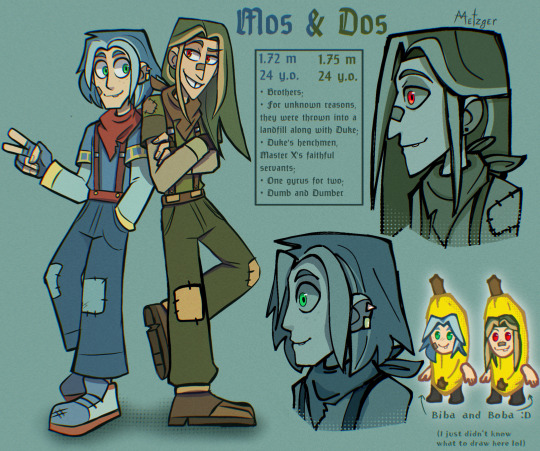
The main eccentrics of RT 👀
#robot trains#robot trains humanization#robot trains mos#robot trains dos#ibispaintx#art#humanization#my art
89 notes
·
View notes
Text

robot studies robot studies
#just finished portal 2!! i'm soooo normal abt wheatley :3#artists on tumblr#my art :0#portal fanart#portal 2#portal#glados#glados portal#glados fanart#wheatley#wheatley portal 2#wheatley fanart#wall e#wall e eve#wall e mo#wall e fanart#one one#infinity train#one one infinity train#interstellar#tars interstellar#robots#robot art#art study#digital art#digital illustration
2K notes
·
View notes
Text
the amount of people overreacting like crazy over curtis’s interview is genuinely wild. the guy said he really liked watching hazard as a kid, but he’d rather have salah in his team. guy’s allowed to have an opinion, especially when he said specifically that he thinks hazard is better aesthetically & technically, but he’d rather have mo to win a game. we are overreacting 😭🙏
#this kind of head loss is why players are so robotically pr trained nowadays#liverpool fc#curtis jones#mo salah
8 notes
·
View notes
Text
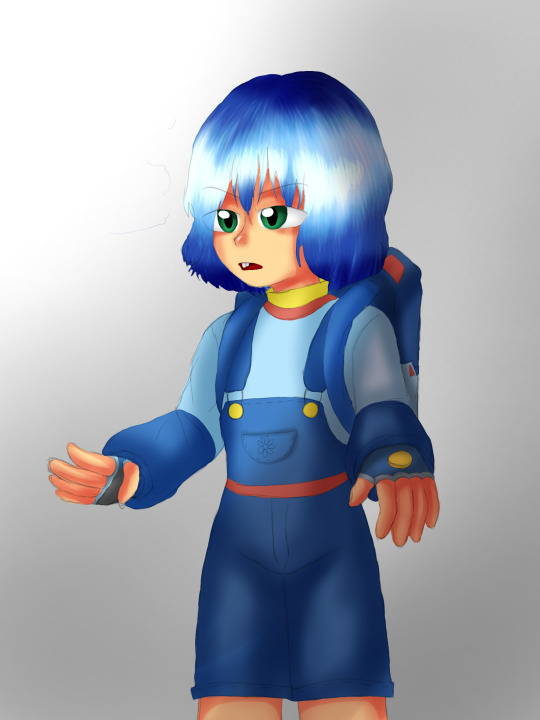
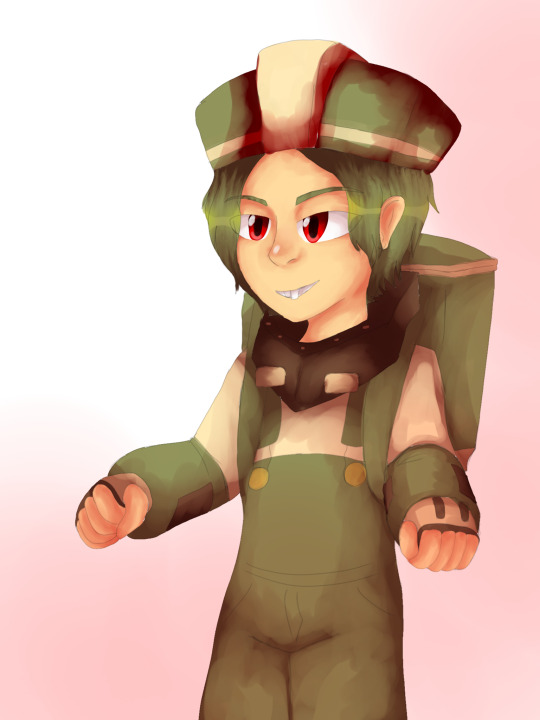
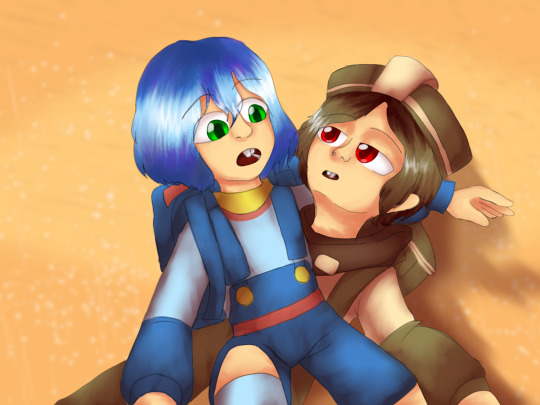
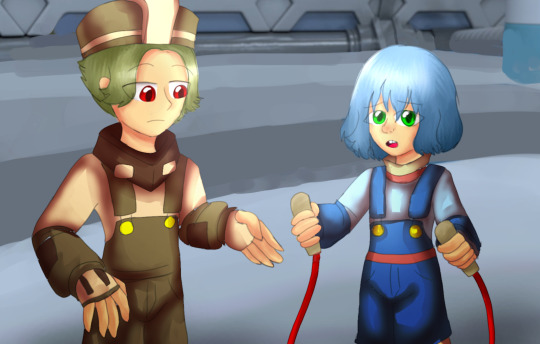
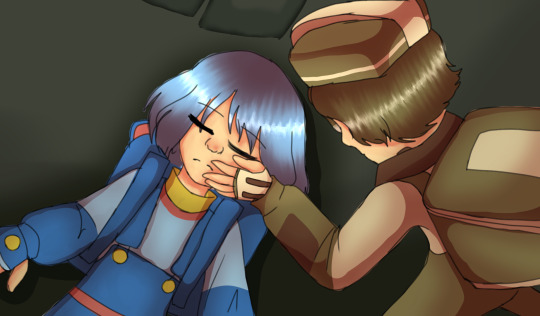
Хуманизации Моса и Доса годовой давности, хаха
31 notes
·
View notes
Text
DUNE AU DAMIAN WAYNE X READER
Mild Brutalia
Fem reader
Notes: Under no circumstances should opinions expressed by characters be linked to this author in anyway. This is written in the style of Frank Hebert’s book, this means spoilers for Dune. While inspired by Frank Herbert’s novel the plotline may be similar, however it will not be the same. The following work is apart of a series, the first few chapters will be slow.
Imperial terminology
Bene Gesserit: The ancient school of mental and physical training established primarily for female students after the Butlerian Jihad destroyed the so-called ‘thinking machines’ and robots.
Caladan: Third planet of Delta Pavonis.
Filmclip: An apparatus used mainly for training consisting of a shigawire imprint carrying a mnemonic pulse.
Mating index: The Bene Gesserit master record of its human breeding program aimed at producing the Kwisatz Haderach.
Mentat: The class of imperial citizens trained for supreme accomplishments of logic. ‘Human computers’.
Sapho: High-energy liquid extracted from barrier roots of Ecaz. Used by Mentats who claim it amplifies mental powers. Users develop deep ruby stains on mouth and lips.
Duke Bruce Wayne of House Wayne is the father of Damian Wayne, the child was birthed by Lady Talia. Despite having feelings of affection for Lady Talia, Duke Wayne has decided against marriage to his child’s mother. Lady Talia will serve House Wayne as a concubine to Duke Wayne and mother to Damian Wayne. Lady Talia will not have anymore children.
Mating Index (Imperial Year 10109)
Damian heard the sound of boots clicking before the soft patter of rain registered. He racked through all the possible people who would dare wake him from his slumber. While it was no longer dark outside, it was summer so the days were longer on Caladan. His father had always preferred the lighter days, saying that it lifted spirits. His mother though gentle and kind, did not care much for small talk- weather included.
A few knocks in quick succession fully roused Damian from his sleep. Whomever it was clearly knew their place, they were bothering the Duke’s son, the ducal heir. Yet they still had some etiquette to knock on the door.
He sat up in his bed, while he didn’t need to see his hair, Damian was well aware that it was sticking up on end like a spooked hedgehog. He crinkled in nose in disgust at the morning, before slipping out the bed and striding towards the door. Uttering a short prayer under his breath.
“Who is it?” Damian’s voice came out rough and course from the sleep he was currently lacking.
“Lucius Fox, do you have but a moment?” Damian gritted his teeth at the deep toned voice. His father’s Mentat.
Damian obliged the request though displeased, he opened the door to see Lucius’s appearance. Skimming over the constants, the reddish purple tint his lips took from sapho, the colour of his skin and the colour of his eyes. Damian delved past this to see the true emotions in the old man’s stature. From the tensed posture, to slightly crinkled brow it was clear as glass to Damian that the older man was stressed. He was only able to gather the knowledge from his mother’s training, she’d taught him some Bene Gesserit ways. All the subtle tells of emotion no one except a Bene Gesserit could see.
“Ahh young Damian, I apologise for waking you up at this hour.” The Mentat’s tone was apologetic enough for Damian to let go of his grievances as he stiffly nodded in return. Damian only took the disrespect of Lucius not addressing him correctly, since they were so close.
“I have the filmbook capsule on the Bene Gesserit school like you asked for.” Lucius held out the tiny tube to the man. Damian felt himself perk up as he took the tube from Lucius.
“Thank you.” Damian’s tone slightly softer, yet still firm with a nod of the head.
Lucius hesitated, “I’d keep that private, it’s not something some people would appreciate the existence off.”
Damian understood the old man’s warning, don’t tell your mother or anyone else. After a few more words Lucius departed. Damian shut the door behind the receding Mentat’s form.
Damian felt anticipation rush through his bones, a year prior he would not have cared for the schooling system of the Bene Gesserit, he would have scoffed and said ‘Let them keep their secrets’.
However for the past months he’d been plagued by dreams and odd feelings. Dreams of a girl. At first he passed off the dreams, deeming them useless due to his teenage mind, perhaps he just longed for a wife and warm company. Nonetheless the dreams continued as if spurred on by his dismissal.
The dreams were fleeting at first, he could sparingly make out details. Eventually he could work out the shape of the hair and face, the size of the body relative to his. Then the soft sound of the girls voice came and he was completely undone. Could he understand what she was saying? No. But with time he could, Damian was so fascinated and intrigued by this mysterious girl he would move the seas of Caladan just for a true look at her face.
After some vague questioning to his mother, he’d been able to deduce that the clothes the girl wore were of a Bene Gesserit. So Damian had asked Lucius for information on the Bene Gesserit, due to the Mentats supreme intelligence.
With great care Damian placed down the filmbook capsule and made his way to his bathroom.
Damian’s 18th birthday was fast approaching, over the years he’d watch the planes of his face become sharper and more defined, his hair was not as stiff, but has become more malleable. Damian knew there was an expectation on him to chose a concubine or wife in order to continue the Wayne lineage- a house must have an heir.
Damian had never been able to find out from his mother if the Bene Gesserit had ever intended to marry him off to a different house. Despite pointedly asking his mother she always seemed tight lipped about the subject.
Washing his face Damian looked into the mirror with a determined gaze, he would find this mystery girl one way or another.
The Lady Talia was a seasoned warrior and well trained in many styles of combat- her main skill was assassination. The Duke Bruce Wayne did not find use for this skill, many speculate that it was due to his aversion to killing. It is believed by many that the Lady Talia was deeply underestimated, which helped lead to the New Emperors victory.
Commentaries On The New Emperors family - Empress Y/N
Lady Talia sat regally in her chair, her posture as straight as a wire. She noticed the light in her son’s eyes, despite his best efforts to cover it up with a searing scowl.
“Damian,” she firmly spoke breaking the salient sound of rain thrashing on the sunlight.
“Yes mother?” Damian stirred.
“You said you wished to tell me something yesterday.”
Lady Talia noticed the subtle shift in her son’s attitude and the way he seemed to steel himself. It was only a slight tell, but a Bene Gesserit such as herself was trained for such things.
“Mother I would like to have a Bene Gesserit lady.”
“What for?” Talia replied smoothly, resisting the urge to smile. Her son may be a master of concealing his emotions to others, but not to her.
“A Bene Gesserit lady has a great knowledge of politics and that would aid me as Duke. The Bene Gesserit are also formidable- worthy allies and terrible foes. Having one aid me would also be beneficial for our House.” Damian explained still trying to contain his nerves.
“How do you intend on having this Bene Gesserit?”
Damian balked at the question and blushed.
“As an advisor of course.”
“Nothing more?” Lady Talia asked lightly.
Damian wore a mask of impassiveness, “A ducal heir has many responsibilities I intend of fulfilling them.” Damian’s tone had a tinge of ego and arrogance- he will make a strong ducal heir.
Lady Talia regarded him for a moment dissecting the comment till all meanings lay bare. At the core she found his true answer, a ducal heir is expected to find a wife if need be this Bene Gesserit would fill the role.
Her expression softened as she rested her hand onto his, “My son you will make an excellent Duke.” Lady Talia complimented gently, proud of her son for becoming the man she taught him to be.
Damian’s mask cracked to reveal a small smile, “Thank you mother.”
“I believe you should consult your father and Lucius Fox about this matter, it is an important one.”
Damian nodded and the rest of the breakfast was enjoyed in a comfortable silence. Lady Talia adored her son like the stargazer to the night sky- constantly there to see him even if there was nothing new or nothing at all, she would always love him. Throughout her life Lady Talia has had many misgivings, but caring for her son would never be one of them.
Part two
#Damian Wayne x reader#Damian Wayne#dune au#Damian Wayne headcanon#Brutalia#Bruce Wayne#Talia Al Ghul#Fem pov
56 notes
·
View notes
Text
MY TWISTED WONDERLAND FIRST YEAR HEADCANNONS!!
°
°
°
Ace Trappolla°
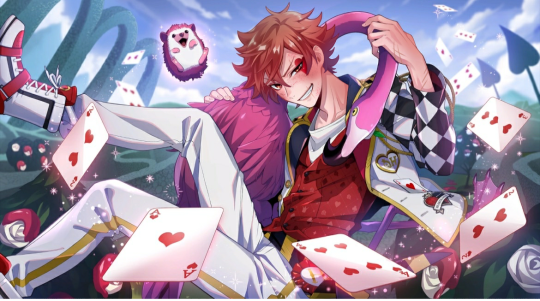
Ace seems to be the guy always out in the sun (hence the sun burn) decided to give his hair a browner hue and add some scars from falls in basketball!!
°
Deuce Spade°
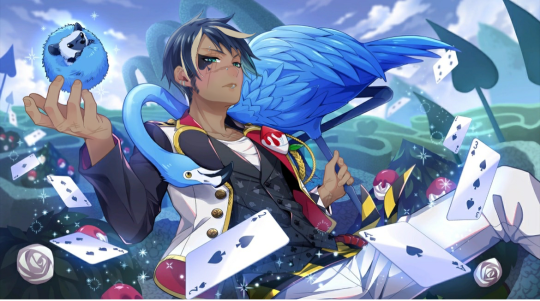
Wanted to give him darken skin THATS A LATINO MAN GUYS- I saw some people keeping his blonde from his delinquent days and I fig it, also kept the peaircing, had some scars... mean mug but he's a sweetie guys :3 (also added sideburns)
°
Jack Howl°
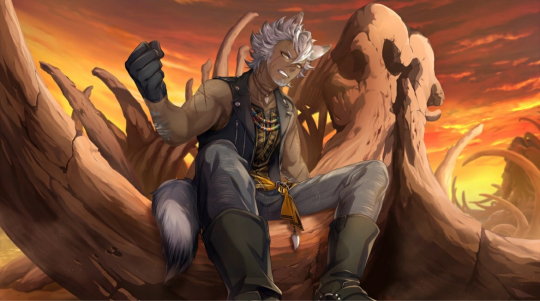
Facial Hair, Big Ol Biceps GOD I NEED THIS WOLF TO CRU- anyways... erm... guh, hehe I lobe Jack yall, he's my shiggle!! Lots of body hair (beastman) and scars (he's a wolf) whats more to be said-
°
Epel Felmeir°
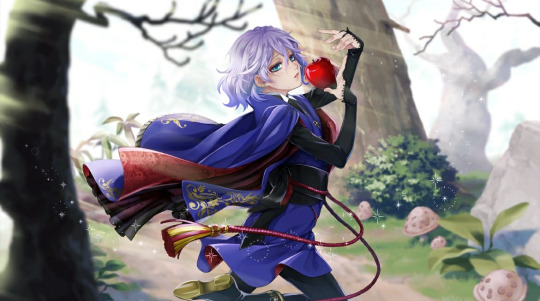
Slightly Darker skin cuz hes from the south, he works guys trust, reder makeup cuz apple!! And some darker hair cuz hes CUNNNTTT, Also freckles and earrings bc well, it suits him!!
°
Sebek Zigvolt°
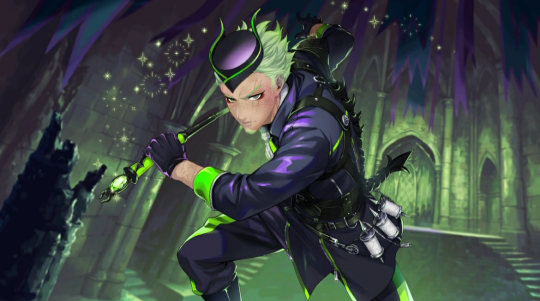
MY DRAGON SHAYLAA (ik hes not actually a dragon...) but anyways I love Sebek yall, him and Jack- TOP TEIR>>> Gave his red makeup cuz he reminds me if a Chinese dragon, lil goatee cuz its hot on him, scars for training and darker hair!!
°
Ortho Shroud°
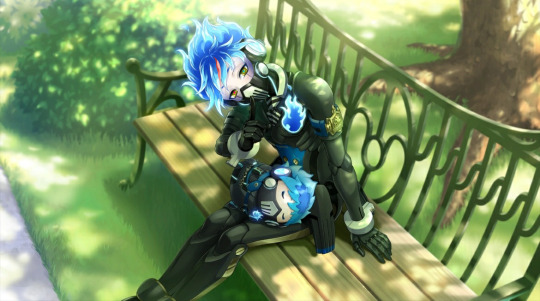
Yes he's a first year fight with the wall, he's my baby, my shiggle i added a little red streak cuz its cute, some sparks in his very analytical eyes and some blue paint on his face, since he's yk... a robot
°
Keep in mind these are all my HEADCANNONS, please mo hate lol° just here to have fun :)
#jack howl#sebek zigvolt#ace trappola#deuce spade#epel felmier#ortho shroud#twst#disney twisted wonderland#twst first years#my shayllaaaa#god i love you jack#god i love you sebek#twst headcanons
28 notes
·
View notes
Text
“Sunny Days” Zoro x reader
No mention of gender!!! (Besides zoro)
Warnings: Fluff, beer?, yearning written by someone who doesn't Actually write.....
No one asked for this.... im just a freak about one piece :D
<~~~~~~~>
You walked out of the kitchen on the sunny, a drink in each hand. When you were in there, using your most charming voice, you asked Sanji for a beer and your typical fruit cup. It worked partially because Sanji knew the beer was for Zoro and also your funny attempt to seduce him. Pretty much everyone on the sunny had a crush on Zoro.
After the door swung shut, you continued your way over too the mast. You saw Zoro there in the shade and walked a little bit faster.
“Hey! Moss head, I got you something!” You approached him with a huge smile, setting the beer next to him and promptly sitting aside him.
He opened his eye, glanced down, then took the beer and immediately started drinking. “Thanks.”
You stared out at the sky, overly aware of your actions, before glancing over to him and replying a hushed “no problem”.
“It’s so hot today, I don’t know how anyone is working… Franky said he’s making me a training robot.” He huffed out a laugh from his chest, “the dummy looks like Sanji.”
“At least you’ll be able to go all out? Just don’t let Sanji find out!” You laughed a little harder than Zoro had, mainly at the thought of Sanji and Zoros typical fighting.
Zoro took a drawn out chug of his beer, you started working at your fruit salad. Both of you looked out to the sky, and a sudden breeze blew by.
"I'm really happy I'm a pirate on days like these. Just sitting and relaxing... marines are too uptight to do this." You kept eating, forcing the words to jumble a bit.
Zoro thankfully understood your sentiment, "we could sleep right here right now. Thats one of the main reasons I joined Luffy."
"Really?" "No," he had a slightly devil like smile, "he told me I was already on his crew, he held my swords hostage." "Liar, You have some secret reason you are scared of admitting." You huffed, returning to your fruit after a momentary pause.
"Whatever, I'm gonna take a nap in the sun." He finished the last of his beer, and quickly walked to the railing of the sunny.
You watched as he sat down, resting his head and back against the wooden railing. You knew it was in no way comfortable for him, so you stood. You were intending to offer him a pillow or something you could grab from inside.
"Hey that doesn't seem very comfortable." Zoro opened his eye and simply grunted at you.
"I can grab you something? If you want." You felt like you were twiddling your thumbs.
"Sure."
You returned to Zoro just staring at the sky. He had waited for you.
"here lean forward," Zoro obliged and you slid the cushion behind his head, "okay how does that feel?" "Good."
It was like talking to a wall.
"Okay... do you mind if I join you?"
Zoro looked at you, then jolted his head, motioning for you to join.
It wasn't the most abnormal thing, most of the crew cuddled at random times. That was just the nature of being on the sunny. Everyone held affection for each other. You told yourself this as you joined Zoros side on the deck. You laid your head on his legs, curling up into a 'c' shape next to him.
Not expecting him to feel, due to his pants, you started tracing shapes into his leg. You traced stars, thinking of how clear the shapes in the sky were at night. Then you did his swords, thinking about how they would glint in the sun when he trained. You were pulled out of your thoughts when you felt his hand in your hair. Mainly his fingertips, they were… rubbing your scalp, at least that's what it felt like. Not scratching or really focusing on your hair, but more like he wanted to feel your skull.
The two of you rested there, who knows how long. But it had been precisely 8 minutes until you fell asleep. The combination of Zoro’s hand on your head, the breeze, the sunny rocking, and the sound of waves crashing against the sunny lulled you into a nap. Most likely the best nap you had had since you joined the strawhats.
When you awoke, Zoro was asleep. Snoring against the pillow you had brought and placed for him. You readjusted yourself so that you were flat on your back, still resting on his thigh. You looked up at him. Feeling a sense of calm rush over you, you lifted his hand and placed it on your face. Not really knowing why, but it had brought you even more comfort. You placed a gentle kiss onto his warm, rough palms, and fell asleep again. This time it took only 3 minutes. You couldn’t help it, you felt so warm with the sun and Zoro next to you.
The next time you woke, there was no peace. Ussop and Nami were gossiping, Zoro and Sanji fighting (with you and Zoro still in the same position as before), Luffy and Franky were drinking milk, and you could only imagine what the rest of Luffy’s beloved crew was doing.
#me when i yearn to be loved by a family#one piece x reader#zoro x reader#zoro/reader#zoro roronoa x reader#roronora zoro x reader#fluff#i just really wish i had someone to lay on in the sun#also i tried my best with zoro's character#i feel in my soul hes a silly guy#unless he wants to nap#ALERT runon sentences
102 notes
·
View notes
Text
I've never seen this discussed before: do you think Izzy was created specifically for the mission to learn about the Cyber-sleeves and figure out a way for the Quintessons to take back Quintus Prime's power? Mo says she's sorry Robby's girlfriend turned out to be an "ancient alien," but is that just what she believes given what she knows? Could she be referring to how Quintessons in general are ancient aliens? Because in an earlier episode, Prowl specifically said that nobody has ever heard of such a being (as a Quintesson shapeshifter).
Because if this is the case, the way Izzy acted while undercover could partially be due to a lack of experience in general, not simply due to being an alien... but I'm unsure. If she/her type of Quintesson was only created after that one Quintesson Executioner had that fight with Mo and got shot back into space, Izzy would be an extremely new life form and it would make her story extra depressing! Of course, Izzy doesn't at all act like a human who's <one would behave since she's not a human (this is why while G1 characters like Nightbird or Scourge might have just been created, they are robotic and have programming so they don't act their physical age), but it would still be sad.
If Izzy isn't that new a creation, and it's just that she was only dispatched to Earth very recently, what was she doing before this mission? What was her life like given that she references how uncaring her "family" is compared to the Maltos? Given that we see the Quintesson Judge being abusive, I'm sure Izzy too was abused, but in what ways? I wonder what it looked like for her during a training period or something like that. At no point does Izzy behave in a way that places her as being much more mature than someone like her now very ex-boyfriend, and she did a very good job fooling everyone, so I wonder if she had to study the mannerisms of the human who had the form she was copying or something like that.
All of these things I think there isn't enough information to draw conclusions about, and are part of why I hope Izzy is explored more.
13 notes
·
View notes
Note
If you've seen WALL-E, I'd be extremely curious for your thoughts if you haven't already shared them. Actually, I have a few movies I'd love your opinion on, but I'm not gonna keep ya all day. Thank you for your content! :)
I love WALL-E. It's a cool idea, that the whole movie is about what it means to be human, but from the perspective of a robot.
I think it's very straightforward, and there's not a lot of stuff to analyze, which is good! He's this robot that's "developed a personality" but what he's really becoming is human.
And the movie is saying that being human is liking things, taking risks, being vulnerable, and most importantly taking care of things. As in, caring for things that need you. Even if it means you don't survive or get to be as comfortable.
WALL-E preserves the stuff he has an interest in instead of junking it, but remember, he takes care of that little cockroach. He carefully organizes all his things. He fixes what's broken. That's what humans were placed on Earth to do: have dominion over it. Take care of it. Cultivate the land, order the animals.
And instead we use it all to make ourselves more comfortable.
Not WALL-E, though! And he teaches that to everybody else.
The only things I struggle with, with WALL-E, are the repeated "Directive" themes. Like, what you're made for isn't what you should be. You could say WALL-E is all about being what makes you happy.
I disagree with that. That worldview is no good. What makes you happy changes from moment to moment, and it usually comes at the expense of other people and what you, yourself, need to be good and healthy. But you could argue that that's how the humans in WALL-E got to be blobs in chairs that abandon their planet, so my beef with those themes aren't very strong.
You could just argue that the narrative is saying, WALL-E, who was created to put waste in its proper place, is still doing that. He's just doing it in a deeper, better, more correct way than all the other robots. He puts waste in its proper place, but by doing that, he also protects the things that are worthwhile and shouldn't be wasted.
And in that same train of thought, EVE is so focused on collecting and delivering the one sign of life that makes Earth worth living for--that's her directive. But it turns out, WALL-E is the one sign of life that makes Earth worth living for, because of the example he sets. That example of finding joy in hard work and protecting things that are worth protecting.
I also think, if WALL-E were released right now, in 2024, it would not be well-liked or accepted. Because people would get their feathers ruffled by the idea that we're all headed toward being blobs who can't see past our own comfort. And they'd accuse the movie of "body shaming," that kind of junk. Then again, the same people who are worried about that are also worried about that great big topic we call "the environment," and WALL-E cleverly set itself up to be championing "the environment," so maybe it would've shielded itself. Either way, I think the movie was very brave to say, "yeah, hey, we're super lazy and self-satisfying and obsessed with our own comfort, and this is the dystopia it could lead us to."
And MO is my favorite.
And love, too. Anyway. Yes, I love WALL-E! And hey! Ask me about any movies you want! I don't get that many of these questions, and I really like thinking them through and trying to verbalize them, so please do! And thank you for this question.
51 notes
·
View notes
Text
So, I continue to draw humanizations of characters from Robot Trains
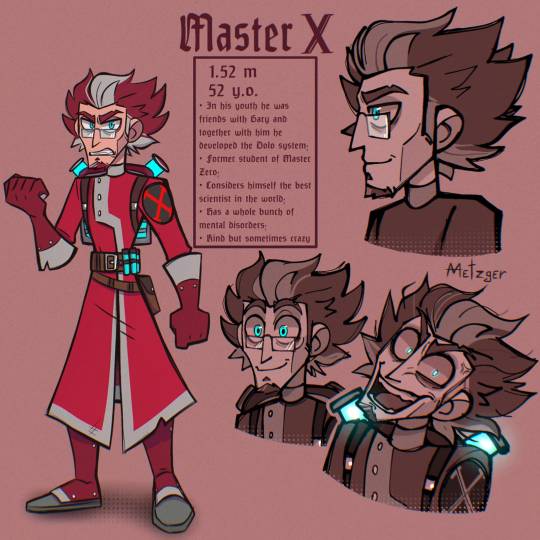
In my opinion, X is one of the most ambiguous and mysterious characters.
He saved Duke, Mos with Dos (+ Johnny) , and he helped save the world in S2.
Well, in S3 this shorty became a real villain who wants to take over the world.
It is already interesting to find out if he will be able to do this
(I like this madman lol)
#robot trains train x#robot trains master x#robot trains humanization#robot trains#art#humanization#ibispaintx#my art
94 notes
·
View notes
Text
In 2017, soon after Google researchers invented a new kind of neural network called a transformer, a young OpenAI engineer named Alec Radford began experimenting with it. What made the transformer architecture different from that of existing A.I. systems was that it could ingest and make connections among larger volumes of text, and Radford decided to train his model on a database of seven thousand unpublished English-language books—romance, adventure, speculative tales, the full range of human fantasy and invention. Then, instead of asking the network to translate text, as Google’s researchers had done, he prompted it to predict the most probable next word in a sentence.
The machine responded: one word, then another, and another—each new term inferred from the patterns buried in those seven thousand books. Radford hadn’t given it rules of grammar or a copy of Strunk and White. He had simply fed it stories. And, from them, the machine appeared to learn how to write on its own. It felt like a magic trick: Radford flipped the switch, and something came from nothing.
His experiments laid the groundwork for ChatGPT, released in 2022. Even now, long after that first jolt, text generation can still provoke a sense of uncanniness. Ask ChatGPT to tell a joke or write a screenplay, and what it returns—rarely good, but reliably recognizable—is a sort of statistical curve fit to the vast corpus it was trained on, every sentence containing traces of the human experience encoded in that data.
When I’m drafting an e-mail and type, “Hey, thanks so much for,” then pause, and the program suggests “taking,” then “the,” then “time,” I’ve become newly aware of which of my thoughts diverge from the pattern and which conform to it. My messages are now shadowed by the general imagination of others. Many of whom, it seems, want to thank someone for taking . . . the . . . time.
That Radford’s breakthrough happened at OpenAI was no accident. The organization had been founded, in 2015, as a nonprofit “Manhattan Project for A.I.,” with early funding from Elon Musk and leadership from Sam Altman, who soon became its public face. Through a partnership with Microsoft, Altman secured access to powerful computing infrastructures. But, by 2017, the lab was still searching for a signature achievement. On another track, OpenAI researchers were teaching a T-shaped virtual robot to backflip: the bot would attempt random movements, and human observers would vote on which resembled a flip. With each round of feedback, it improved—minimally, but measurably. The company also had a distinctive ethos. Its leaders spoke about the existential threat of artificial general intelligence—the moment, vaguely defined, when machines would surpass human intelligence—while pursuing it relentlessly. The idea seemed to be that A.I. was potentially so threatening that it was essential to build a good A.I. faster than anyone else could build a bad one.
Even Microsoft’s resources weren’t limitless; chips and processing power devoted to one project couldn’t be used for another. In the aftermath of Radford’s breakthrough, OpenAI’s leadership—especially the genial Altman and his co-founder and chief scientist, the faintly shamanistic Ilya Sutskever—made a series of pivotal decisions. They would concentrate on language models rather than, say, back-flipping robots. Since existing neural networks already seemed capable of extracting patterns from data, the team chose not to focus on network design but instead to amass as much training data as possible. They moved beyond Radford’s cache of unpublished books and into a morass of YouTube transcripts and message-board chatter—language scraped from the internet in a generalized trawl.
That approach to deep learning required more computing power, which meant more money, putting strain on the original nonprofit model. But it worked. GPT-2 was released in 2019, an epochal event in the A.I. world, followed by the more consumer-oriented ChatGPT in 2022, which made a similar impression on the general public. User numbers surged, as did a sense of mystical momentum. At an off-site retreat near Yosemite, Sutskever reportedly set fire to an effigy representing unaligned artificial intelligence; at another retreat, he led colleagues in a chant: “Feel the AGI. Feel the AGI.”
In the prickly “Empire of AI: Dreams and Nightmares in Sam Altman’s OpenAI” (Penguin Press), Karen Hao tracks the fallout from the GPT breakthroughs across OpenAI’s rivals—Google, Meta, Anthropic, Baidu—and argues that each company, in its own way, mirrored Altman’s choices. The OpenAI model of scale at all costs became the industry’s default. Hao’s book is at once admirably detailed and one long pointed finger. “It was specifically OpenAI, with its billionaire origins, unique ideological bent, and Altman’s singular drive, network, and fundraising talent, that created a ripe combination for its particular vision to emerge and take over,” she writes. “Everything OpenAI did was the opposite of inevitable; the explosive global costs of its massive deep learning models, and the perilous race it sparked across the industry to scale such models to planetary limits, could only have ever arisen from the one place it actually did.” We have been, in other words, seduced—lulled by the spooky, high-minded rhetoric of existential risk. The story of A.I.’s evolution over the past decade, in Hao’s telling, is not really about the date of machine takeover or the degree of human control over the technology—the terms of the A.G.I. debate. Instead, it’s a corporate story about how we ended up with the version of A.I. we’ve got.
The “original sin” of this arm of technology, Hao writes, lay in a decision by a Dartmouth mathematician named John McCarthy, in 1955, to coin the phrase “artificial intelligence” in the first place. “The term lends itself to casual anthropomorphizing and breathless exaggerations about the technology’s capabilities,” she observes. As evidence, she points to Frank Rosenblatt, a Cornell professor who, in the late fifties, devised a system that could distinguish between cards with a small square on the right versus the left. Rosenblatt promoted it as brain-like—on its way to sentience and self-replication—and these claims were picked up and broadcast by the New York Times. But a broader cultural hesitancy about the technology’s implications meant that, once OpenAI made its breakthrough, Altman—its C.E.O.—came to be seen not only as a fiduciary steward but also as an ethical one. The background question that began to bubble up around the Valley, Keach Hagey writes in “The Optimist: Sam Altman, OpenAI, and the Race to Invent the Future” (Norton), “first whispered, then murmured, then popping up in elaborate online essays from the company’s defectors: Can we trust this person to lead us to AGI?”
Within the world of tech founders, Altman might have seemed a pretty trustworthy candidate. He emerged from his twenties not just very influential and very rich (which isn’t unusual in Silicon Valley) but with his moral reputation basically intact (which is). Reared in a St. Louis suburb in a Reform Jewish household, the eldest of four children of a real-estate developer and a dermatologist, he had been identified early on as a kind of polymathic whiz kid at John Burroughs, a local prep school. “His personality kind of reminded me of Malcolm Gladwell,” the school’s head, Andy Abbott, tells Hagey. “He can talk about anything and it’s really interesting”—computers, politics, Faulkner, human rights.
Altman came out as gay at sixteen. At Stanford, according to Hagey, whose biography is more conventional than Hao’s but is quite compelling, he launched a student campaign in support of gay marriage and briefly entertained the possibility of taking it national. At an entrepreneur fair during his sophomore year, in 2005, the physically slight Altman stood on a table, flipped open his phone, declared that geolocation was the future, and invited anyone interested to join him. Soon, he dropped out and was running a company called Loopt. Abbott remembered the moment he heard that his former student was going into tech. “Oh, don’t go in that direction, Sam,” he said. “You’re so personable!”
Personability plays in Silicon Valley, too. Loopt was a modest success, but Altman made an impression. “He probably weighed a hundred and ten pounds soaking wet, and he’s surrounded by all these middle-aged adults that are just taking in his gospel,” an executive who encountered him at the time tells Hagey. “Anyone who came across him at the time wished they had some of what he had.”
By his late twenties, Altman had parlayed his Loopt millions into a series of successful startup investments and become the president of Y Combinator, the tech mega-incubator that has spun off dozens of billion-dollar companies. The role made him a first point of contact for Valley elders curious about what was coming next. From Jeff Bezos, he borrowed the habit of introducing two people by e-mail with a single question mark; from Paul Graham, Y Combinator’s co-founder, he absorbed the idea that startups should “add a zero”—always think bigger. It was as if he were running an internal algorithm trained on the corpus of Silicon Valley-founder lore, predicting the next most likely move.
To the elders he studied, Altman was something like the tech world’s radiant child, both its promise and its mascot. Peter Thiel once remarked that Altman was “just at the absolute epicenter, maybe not of Silicon Valley, but of the Silicon Valley zeitgeist.” (Altman is now married to a young Australian techie he met in Thiel’s hot tub.) Graham offered his own version: “You could parachute him into an island full of cannibals and come back in five years and he’d be king.” Some kind of generational arbitrage seemed to be under way. In 2008, Altman began attending Sun Valley Conference, an exclusive annual retreat for industry leaders, where he eventually became “close friends,” we learn, with Barry Diller and Diane von Furstenberg. Yet, in the mid-twenty-tens, he still shared an apartment with his two brothers. Hao records a later incident in which he offered ketamine to an employee he’d just fired. He was both the iconic child to the tech world’s adults and the iconic adult to its children.
An interesting artifact of the past decade in American life is that the apocalyptic sensibility that came to grip U.S. politics during the 2016 Presidential campaign—the conviction, on both right and left, that the existing structure simply could not hold—had already bubbled up in Silicon Valley a few years earlier. By 2015, Altman had been donating to Democratic candidates and seemed to have seriously considered a run for governor of California. But he also told Tad Friend, in a New Yorker Profile, that he was preparing for civilizational collapse and had stockpiled “guns, gold, potassium iodide, antibiotics, batteries, water, gas masks from the Israeli Defense Force, and a big patch of land in Big Sur I can fly to.”
One view is that tech billionaires saw the brink early because they understood just how unequal—and therefore unstable—American society was becoming. But, inside the Valley, that anxiety often expressed itself in the language of existential risk. In particular, fears about runaway artificial intelligence surged around the time of the 2014 publication of “Superintelligence,” by the philosopher Nick Bostrom. According to Hao, Elon Musk became fixated on an A.I. technologist, Demis Hassabis—a co-founder of DeepMind, which had recently been acquired by Google—whom Musk reportedly viewed as a “supervillain.” That same year, at an M.I.T. symposium, Musk warned that experiments in artificial intelligence risked “summoning the demon.”
Altman had been itching for a bigger project. The next Memorial Day weekend, he gathered hundreds of young Y Combinator protégés for an annual glamping retreat among the redwoods of Mendocino County. The night before, he had beaten a group of Y Combinator staffers at Settlers of Catan. Now, standing before them, he announced that his interests had narrowed—from, roughly, all of technology to three subjects that he believed could fundamentally change humanity: nuclear energy, pandemics, and, most profound of all, machine superintelligence.
That same month, Altman sent an e-mail to Musk. “Been thinking a lot about whether it’s possible to stop humanity from developing AI,” he wrote. “I think the answer is almost definitely not. If it’s going to happen anyway, it seems like it would be good for someone other than Google to do it first.” Altman proposed his Manhattan Project for A.I. so that the technology, as he put it, would “belong to the world,” through some form of nonprofit. Musk replied, “probably worth a conversation.”
It fell to Chuck Schumer, of all people, to offer the secular-liberal benediction for the project—by then consolidated as OpenAI and led by Altman, who had sidelined Musk. “You’re doing important work,” the New York senator told the company’s employees, seated near a TV projecting a fire, during an off-the-record visit to OpenAI’s headquarters in 2019, as Hao documents. “We don’t fully understand it, but it’s important.” Schumer went on, “And I know Sam. You’re in good hands.”
How do people working in A.I. view the technology? The standard account, one that Hao follows, divides them into two camps: the boomers, who are optimistic about AI’s potential benefits for humanity and want to accelerate its development, and the doomers, who emphasize existential risk and edge toward paranoia. OpenAI, in its original conception, was partially a doomer project. Musk’s particular fear about Demis Hassabis was that, if Google assigned a potential A.G.I. the goal of maximizing profits, it might try to take out its competitors at any cost. OpenAI was meant to explore this technological frontier in order to keep it out of malign hands.
But in early 2018 Musk left. The organization was struggling to raise funds—he had pledged to raise a billion dollars but ultimately contributed less than forty-five million—and a faction within OpenAI was pushing to convert it to a for-profit entity, both to attract capital and to lure top researchers with equity. At the meeting where Musk announced his departure, he gave contradictory explanations: OpenAI, he said, wouldn’t be able to build an A.G.I. as a nonprofit, and that Tesla had more resources to pursue this goal, but he also suggested that the best place to pursue A.G.I. was elsewhere. An intern pointed out that Musk had insisted that the for-profit dynamic would undermine safety in developing A.G.I. “Isn’t this going back to what you said you didn’t want to do?” he asked. “You can’t imagine how much time I’ve spent thinking about this,” Musk replied. “I’m truly scared about this issue.” He also called the intern a jackass.
As OpenAI evolved into a nonprofit with a for-profit subsidiary, it came to house both perspectives: a doomer group focussed on safety and research, whose principal advocate was the Italian American scientist Dario Amodei; and a boomer culture focussed on products and applications, often led by Greg Brockman, an M.I.T. dropout and software engineer who pushed the organization toward embracing commercialization. But these lines crossed. Amodei ultimately left the company, alongside his sister, Daniela, insisting that OpenAI had abandoned its founding ethos, though, in Hao’s view, the company they founded, Anthropic, would “in time show little divergence” from OpenAI’s model: the same fixation on scale, the same culture of secrecy. From the other direction came Ilya Sutskever, who had made a major breakthrough in A.I. research as a graduate student in Toronto, and who would become perhaps OpenAI’s most influential theorist. He had once been an unabashed boomer. “I think that it’s fairly likely,” he told the A.I. journalist Cade Metz, “that it will not take too long of a time for the entire surface of the Earth to become covered with data centers and power stations.” By 2023, however, when he helped orchestrate a briefly successful corporate coup against Altman, he was firmly aligned with the doomers. The trajectories of Sutskever and the Amodeis suggest a more fluid category—the boomer-doomers.
Those who most believe in a cause and those who most fear it tend to share one essential assessment: they agree on its power. In this case, the prospect of a technology that could end a phase of civilization drew both camps—boomers and doomers—toward the same flame. Helen Toner, an A.I.-safety expert and academic who eventually joined OpenAI’s board, had spent time studying the fast-evolving A.I. scene in China, the United States’ chief rival in the global race. As Hagey recounts, “Among the things she found notable in China was how reluctant AI engineers were to discuss the social implications of what they were doing. In the Bay Area, meanwhile, they seemed to want to do nothing but.”
Yet OpenAI’s success hinged less on speculative philosophies than on more familiar systems: the flexibility of American capital, and Altman’s personal charm. In 2018, while attending the Sun Valley Conference, in Idaho, Altman ran into Microsoft’s C.E.O., Satya Nadella, in a stairwell and pitched him on a collaboration. Though Bill Gates was skeptical, most of Nadella’s team was enthusiastic. Within a year, Microsoft had announced an investment of a billion dollars in OpenAI—much of it in the form of credits on its cloud platform, Azure. That figure later rose beyond ten billion. Hao speaks with a Chinese A.I. researcher who puts it plainly: “In China, which rivals the U.S. in AI talent, no team of researchers and engineers, no matter how impressive, would get $1 billion, let alone ten times more, to develop a massively expensive technology without an articulated vision of exactly what it would look like and what it would be good for.”
Nadella appears only in passing in both of these books—he’s the adult in the room, and adults are famously not so interesting. But after Microsoft’s multibillion-dollar investments, his influence over OpenAI has come to appear at least as consequential as Altman’s. It was Nadella, after all, who intervened to end the brief 2023 coup, after which Altman was swiftly reinstalled as C.E.O. The year before, Sutskever remarked that “it may be that today’s neural networks are slightly conscious”—a comment to which a scientist at a rival A.I. company replied, “In the same sense that it may be that a large field of wheat is slightly pasta.” Nadella, by contrast, seems broadly allergic to boomer-doomer metaphysics.
The deeper dynamic of contemporary artificial intelligence may be that it reflects, rather than transcends, the corporate conditions of its creation—just as Altman mirrored the manners of his Silicon Valley elders, or as a chatbot’s replies reflect the texts it has been trained on. Appearing recently on Dwarkesh Patel’s influential tech podcast, Nadella, a smooth and upbeat presence, dismissed A.G.I. as a meaningless category. When Patel pressed him on whether A.I. agents would eventually take over not only manual labor but cognitive work, Nadella replied that this might be for the best: “Who said my life’s goal is to triage my e-mail, right? Let an A.I. agent triage my e-mail. But after having triaged my e-mail, give me a higher-level cognitive-labor task of, hey, these are the three drafts I really want you to review.” And if it took over that second thing? Nadella said, “There will be a third thing.”
Nadella seemed quite convinced that A.I. remains a normal technology, and his instinct was to try to narrow each question, so that he was debating project architecture rather than philosophy. When Patel wondered if Nadella would add an A.I. agent to Microsoft’s board, a fairly dystopian-sounding proposition, Nadella replied that Microsoft engineers were currently experimenting with an A.I. agent in Teams, to organize and redirect human team members, and said that he could see the use of having such an agent on Microsoft’s board. It did sound a bit less scary, and also maybe a bit less interesting.
Much like Altman, Nadella is now trying to shift the way the public thinks about A.I. by changing the way it’s talked about—less science fiction, more office productivity. It’s an uphill fight, and at least partly the industry’s own fault. The early, very public bouts of boomerism and doomerism helped attract investment and engineering talent, but they also seeded a broad, low-level unease. If Sutskever—who knew as much about the technology as anyone—could declare it “slightly conscious,” it becomes markedly harder for Nadella, three years later, to reassure the public that what we’re really talking about is just helpful new features in Microsoft Teams.
In other ways, too, Altman is contending with a shifting cultural tide. Sometime around 2016, the tone of tech coverage began to darken. The hagiographic mode gave way to a more prosecutorial one. David Kirkpatrick’s “The Facebook Effect” (2010) has its successor in Sarah Wynn-Williams’s “Careless People” (2025); Michael Lewis’s “The New New Thing” (1999) has been countered by Emily Chang’s “Brotopia” (2018); even Amazon’s great chronicler, Brad Stone, moved from “The Everything Store” (2013) to the more skeptical “Amazon Unbound” (2021).
Hao’s reporting inside OpenAI is exceptional, and she’s persuasive in her argument that the public should focus less on A.I.’s putative “sentience” and more on its implications for labor and the environment. Still, her case against Altman can feel both very personal and slightly overheated. Toward the end of “Empire of AI,” she writes that he has “a long history of dishonesty, power grabbing, and self-serving tactics.” (Welcome to the human race, Sam.) Hao tries hard, if not very successfully, to bolster an accusation made public in 2021 by his sister Annie Altman—that, beginning when she was three and Sam was twelve, he climbed into her bed and molested her, buried memories that she says she recovered during therapy in her twenties. (Altman denies the allegation.) This new, more critical vision of the tech founders risks echoing Musk’s vendetta against Hassabis—inflating contingent figures into supervillains, out of ambient anxiety.
Altman’s story is at once about a man changing artificial intelligence and about how A.I.’s evolving nature has, in turn, changed him—quieting, without resolving, the largest questions about work, power, and the future. Hao’s book opens in late 2023, with the brief ouster of Altman by Sutskever and several senior OpenAI executives, an episode now referred to internally as “the Blip.” When Altman learns of the attempted coup, he is in Las Vegas for a Formula 1 race. Sutskever calls him over Google Meet and tells him that he is being fired. Altman remains serene. He doesn’t appear to take the moment too seriously—perhaps because, in Sutskever’s zeal, he recognizes a version of his former self. Calmly, he replies, “How can I help?” He has become, in every sense, all business.
3 notes
·
View notes
Text

More Guts than Subs
Akong giapil, dili lang dula, Kundili pagsulay sa lawas og kalag. Sa tan-aw, murag sayon ra kaayo, Pero sa tinuod, murag training pang ninja.
Sa akong hunanuna "Makaya ra ni!" Pero sa tinuod, murag kog gilubong sa kabug-at. Ang resistensya? ni-give up og una. Ang tuhod? Kada lihok naay reklamo og protesta.
Ang Pinas team murag Avengers sa field. Kami, murag robots nga kulang pa og build . Ang agility nila, pa slide-slide and dive pa Kami? pa ubo-ubo na, hilak " sub sa, sub sa!"
Taas ang damgo, pero mas taas ang cramps. Akong tiil, gahilak murag gikusi og crabs. Naay paltos, ayaw daw hilabti basin mu-nana. Unta naay sale sa tiil kay permi lugi sa dula.
Narealize nako, dula ra man unta ni, Pero sa uban, murag life-and-death sa live streaming. ACL, bali bukog, pilay, bisan walay premyong kwarta, Mas maayo pang mo-exit nga buhi kesa MVP nga ga-wheelchair sa kalsada.
Naka-survive sa dula sa disyertong init kaayo. Di man mi champion, pero proud so efforts for sure. Mi barog bisan walay tarong nga sub, Magpabilin ang kalipay, kay we love this game, no shame.
2 notes
·
View notes
Text
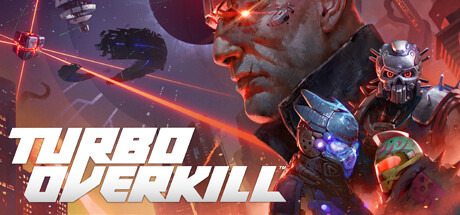
Turbo Overkill. Now this is a video game. An over-the-top retro first-person shooter that really gets what was fun about 90s shooter games.
And that was the power fantasy of it all. The plot doesn’t matter much. Not that the writing is bad in anyway, it’s actually quite funny at times. But it’s a very modest story for a game, it knows you are here to play a game and not watch a movie. The overarching theme of the story really is that our protagonist Johnny Turbo suffers defeat, only to recover from that defeat by getting cybernetic augmentation that makes him into even more of a badass cyborg. And you play as him.
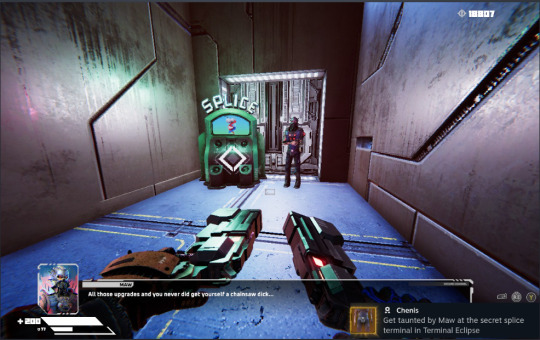
Like in every 90s shooter, you are a fast-moving, hard-hitting gun wielding badass, but Johnny has a distinguishing trait: Johnny has a chainsaw built into his robot leg and he has a devastating glide chainsaw kick. You can upgrade the chainsaw kick to make you regain health and armor, which makes Johnny close to unstoppable. Besides the shooting, there is a focus on quick movement and platforming, and a lot of your moveset is about that, including the chainsaw glide kick. Dodging enemy projectiles is your most important skill in combat. You start off with double jump and a dash move, and you soon enough get a upgrade to walk on certain walls and eventually a grapple (you can grapple onto enemies and there is an optional upgrade to set them on fire with the grapple). There is also turbotime, which is basically bullet-time from Max Payne or F.E.A.R. By episode 3, Johnny even gets chainsaws installed into his arms in addition to his chainsaw leg
This is a lot of player character skills to put into a video game, but it’s surprisingly polished an experience, even the first person platforming. And the sheer polish into the execution shines through. There are three vehicle sections, which are surprisingly well-made and elaborate, despite two of them only getting one level each and the third only appears in two levels.
And the meat and potatoes of the first-person shooter are very well-polished. The guns are varied, but all feel useful and fun to use, especially if you get their upgrades, which changes how they work and their alternate firing modes. And the level design is great, creating interesting combat arenas for the action to play out in and fun platforming challenges. The game keeps on topping itself with spectacular environments, there is a train level, a level set in space etc.
It’s a consciously retro game. It’s a revival of 90s FPS design. The game is divided into episodes with the emphasis on fast movement and many weapons, although the platforming seems inspired by the modern Doom games way of reviving the 90s FPS. The game’s aesthetic is slathered in classic cyberpunk aesthetics and 80s neon. And it references its influences repeatedly. The main villain, the rogue A.I Syn is essentially a reference to Shodan from System Shock, one vehicle section feels like a Descent reference, Johnny’s AI companion is voiced by Duke Nukem’s voice actor Jon St. John (he does a lot of varied voice work, but his prescence in a retro fps is definitely a reference, the game is published by Apogee, Duke’s creators) . There is even a reference to more modern FPS games than the mid 90s “doom clone” era, but still old, like the final boss of episode 1 references the final boss of Half-life And turbo time is definitely influenced by F.E.A.R.The list truly goes on and includes countless movie references, Robocop are just one of the more obvious ones.
Yet Turbo Overkill in the head synthesizes its many influences into something that is ultimately original.And in the end it’s just plain fun. Movement is not just quick, but feels fluid and natural. It’s a great game for making you feel powerful. Close to perfection as video game power fantasies go. It’s just so fun to shoot enemies or chainsaw glide kick them to death, and you can even do it in slow-mo for extra coolness. It’s fun to move around the levels double-jumping, dashing, wall-running or grappling. There is so much variety in what you can do and all of it feels fun to do. And it’s hard to analyze why it’s fun, because it’s about how it feels, except you can obviously tell a huge amount of hard work, polish and care went into the game. Turbo Overkill packs far more lot of fun and variety into 7 gb than a lot of triple-a games do into 100 gb.
7 notes
·
View notes
Text

Autobot Junior Rescue Divers Kicker and Sari
by UltimateOptimus
Recording: József Fénye (AKA ChromaRed), Hungarian/Autobot Junior Scuba Diver Location: Autobot/Hungary/Earth Federation/Sumdac Systems Junior Scuba/Rescue Diver Training Diving Pool (At Budapest, in Ocean City, at Robot City Detroit… take your pick) Date: June 201X (Think Dreamwave Transformers Energon comics) Friends: Chad "Kicker" Jones, Earth Federation/Autobot Junior Rescue Diver Sari Sumdac, Sumdac Systems/Autobot Junior Rescue Diver Entry: Junior Rescue Diver Training, Y2Ks Retro Style
József Fénye: Hello there, Personal Log: József Fénye recording another log entry!
Autobot Junior Divers Chad "Kicker" Jones of the Earth Federation, Sari Sumdac of Sumdac Systems and I, József Fénye of Hungary decided to go Y2Ks Retro Scuba Style with a TransformerTech twist - 2004 to 2008 - in today's wave-crashingly successful Junior Rescue Diver Training and Junior Rescue Diver Gear Testing at the Autobot Junior Scuba/Rescue Diver Training Diving Pool here in good ol' Budapest, Hungary!
I took The Perfect Shot of the Heroic Junior Scuballute Rescue Diver Boy's Underwater ParaRescue Ascent with Rescue SCUBAllute and Rescue SCUBACapsule fully inflated with breathable air, Daring Game style between 20.24 feet, 20.04 feet and 19.84 feet (the last of which is above 19.91 feet) in the training diving pool via Dive Digicam - all in high speed yet safe and controlled ascension to illustrate the Y2Ks scuba style twist on a fairy tale story theme of our Junior Rescue Diver Training and Gear Test in which our brave little team of Junior Scuba Divers played the roles of and suited and geared up in the following:
József F. (Callsign: Storyteller): Me, Myself and I, the Hungarian High School Scuba Boy calling the shots decked out in my classic All-Patriotic Red-White-and-Green Hungarian themed ensemble of my Boys' One-Piece Beachbody Racing Swimsuit, Silicone Swim Cap and Nabaiji X-Base Swim Goggles, Seiko Dive Watch, Tribord Mantiroa Mask, SNK 500 Snorkel and R'Gomoove Fins ABC Kit, Scubapro Finseal Buoyancy Compensator Dive Jacket with Air2 Inflator/Octopus, Replica Retro Watergill AT-PAC Hardshell Double Air Tanks with brand new TransformerTech Hardshell Aquajetpack Module built in for maximum Underwater Rocketman action and to catch up with the fast-paced aquadynamic aquabatics without getting bent too badly and "Soda Pop Can" Viking-Style Aqualung Mistral Double Hose Regulator with Buddy Tube Octopus and minimalist Air Gauge, for this JRD training dive swapped out with Replica Retro Watergill Failsafe TransformerTech Snorkelator combined with my SNK 500 snorkel I can switch between Regulator Mode and Snorkel Mode manually or automatically with and Replica Retro Watergill Failsafe TransformerTech Octopus Regulator.
Chad J. (Callsign: Knight-In-Shining-Armor): The Earth Federation's Masked Diver and Our Junior Rescue SCUBAllute Scubaboy Hero who dives to his Scubagirl in Simulated Out Of Air Peril's rescue at 60 feet, popping his regulator out of his mouth, connecting his lips with Sari's in True Love's Scuba Kiss (D'awww…) and plugging his reg into Sari's mouth to buddy breathe just in time like a true Space Age Prince before pulling the ripcords back to Home Sweet Home Base surface suited and geared up in his personalized red-white-and-blue TransformerTech integrated Kicker Kustom version of Earth Federation Scuba Gear: his Kicker Kustom Boys' Racing School Boxer Swimshorts and Silicone Swim Cap, Kicker Kustom Earth Federation Dive Mask, Snorkel and Dive Fins ABC Kit, Kicker Kustom Earth Federation Scubapro Style Stabilizer Jacket Buoyancy Compensator with Air2 Inflator/Octopus, air tank and brand new Earth Federation/Sumdac Systems Junior Rescue SCUBAllute Pack (shown with the inflator ripcord pulled and SCUBAllute ring fully deployed and inflated with breathable air like a real Underwater Junior ParaSCUBATrooper that doubles as a inner tube) and Kicker Kustom Earth Federation Mouthpiece Regulator and Compact Air Gauge scuba rig.
Sari S. (Callsign: Princess): The Sumdac Systems Cyber-Scubagirl and the Scubagirl in Simulated Out Of Air Peril who chose to dive to the bottom of the Junior Scuba/Rescue Diver Training Diving Pool at 60 feet (The max depth for Junior Scuba Divers), twist her scuba rig's air tank closed to simulate the feeling of running out of air during a SCUBA dive as real as it gets - but not TOO real - and play the panicked scubagirl who run out of air with all the regulator mouthpiece panting and puffed up cheeks and swimsuit chest and mouthpiece muffled grunting and underwater struggling (Give Sari Sumdac a Trophy for Best Junior Scuba Diver Actress for her realistic out-of-air simulation!) for Kicker to come diving to her rescue, Junior Rescue Diver buddy breathing and Underwater ParaSCUBA style all suited and geared up in her colorful yellow-gold-black-and-Energon-Cyan personalized TransformerTech upgraded Sari Special version of Sumdac Systems Scuba Gear: her Sari Special Girls' Turtleneck Japanese-Style School Swimsuit and Silicone Swim Cap, Sari Special Sumdac Systems Dive Mask, Snorkel and Dive Fins ABC Kit, Sari Special Sumdac Systems Scubapro Venus Style Girls' Backwing Jacket Buoyancy Compensator with Air2 Inflator/Octopus, air tank and Sari Special Sumdac Systems R190 Style Mouthpiece Regulator and Compact Air Gauge scuba rig and brand new Earth Federation/Sumdac Systems Rescue Inflatable SCUBACapsule (shown with the whole SCUBACapsule fully deployed and inflated with breathable air after pulling the inflator ripcord and wrapping Sari up like a scuba cocoon snug as a scuba bug in an inflatable tug).
Quoth Kicker through his reg in his mouth before he and Sari let rip the cords: "Knight-In-Shining-Armor to Storyteller: Princess is safe and sound and we're going back to Home Sweet Home. Over."
József Fénye over and out for this log entry!
#transformers#transformers energon#transformers animated#2004#2007#scuba#junior diver#regulator#dive mask#air tank#dive fins#scuba rig#junior scuba diver#scubaboy#scubagirl#chad “kicker” jones#kicker#sari sumdac#sari#autobot junior diver#powerlinx scuba rig#xevoz#evolutionary accelerator#ev-ac#scuba backpack#all-in-one scuba backpack#energon grindor#mini-con#transformertech scuba gear#transformertech scuba rig
4 notes
·
View notes
Text
In my brainstorming Robot Trains era again
Was trying to write an alternate dark version of one of the S3 episodes (the one with the circus guy showing up) and I just realized why Duke was so persistent on proving that the circus guy didn't belong there by making him snap.
He was self projecting.
Duke himself, throughout the season, is very easily irritated. And he SEES that he doesn't belong anywhere close to Railwatch. He feels out of place anytime he's not with Mos and Dos (later on he's starting to feel out of place with Mos and Dos because he becomes increasingly aware of Train X's plans but that's a different story)
Am I looking too deep into this because this makes SO MUCH SENSE TO ME NOW. I was so confused by the whole purpose of this episode and I know it's probably just a half-assed attempt at a redemption arc for Duke (even tho we've had that going on ever since season 2???) but this revelation came to me so unexpectedly and it just explains the entirety of this episode (even tho yeah Duke is still pretty stupid in it but people usually do stupid things out of desperation)
28 notes
·
View notes